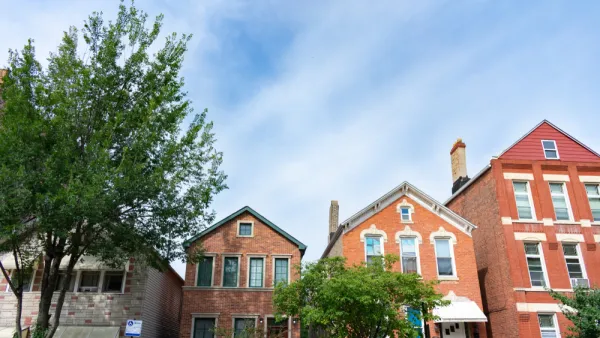An analysis of government data reveals a growing gap in the appraised values of homes in white and Black neighborhoods.

A new report highlights the racial gap in home appraisals, using recent government data to show that homes in predominantly white neighborhoods are assessed at, on average, twice as much as comparable homes in communities of color.
Writing in the Kinder Institute for Urban Research’s Urban Edge, Nancy Sarnoff outlines the results. “The report’s findings show that rather than improving over time, racial inequality in residential appraisals has worsened over the past decade,” with the discrepancy growing even faster during the pandemic. “By comparing similar homes in neighborhoods with the same socioeconomic status and comparable amenities, homes in white neighborhoods were valued $371,000 more than their counterparts in communities of color.” Sarnoff adds that “The neighborhood racial gap in appraised values increased by 75% — or $157,000 — from 2013 to 2021.”
This discrepancy makes a major impact on the ability of families to build equity and generational wealth. “A low appraisal can reduce a home’s market value and affect how much money a bank will lend on the purchase of that home.”
The report recommends two actions for addressing the gap: “reparations through targeted tax credits or stimulus programs and a new appraisal approach that does not rely on past sales.”
FULL STORY: New trove of federal data clearly shows a growing racial gap in home appraisals

National Parks Layoffs Will Cause Communities to Lose Billions
Thousands of essential park workers were laid off this week, just before the busy spring break season.

Retro-silient?: America’s First “Eco-burb,” The Woodlands Turns 50
A master-planned community north of Houston offers lessons on green infrastructure and resilient design, but falls short of its founder’s lofty affordability and walkability goals.

Delivering for America Plan Will Downgrade Mail Service in at Least 49.5 Percent of Zip Codes
Republican and Democrat lawmakers criticize the plan for its disproportionate negative impact on rural communities.

Test News Post 1
This is a summary

Test News Headline 46
Test for the image on the front page.

Balancing Bombs and Butterflies: How the National Guard Protects a Rare Species
The National Guard at Fort Indiantown Gap uses GIS technology and land management strategies to balance military training with conservation efforts, ensuring the survival of the rare eastern regal fritillary butterfly.
Urban Design for Planners 1: Software Tools
This six-course series explores essential urban design concepts using open source software and equips planners with the tools they need to participate fully in the urban design process.
Planning for Universal Design
Learn the tools for implementing Universal Design in planning regulations.
EMC Planning Group, Inc.
Planetizen
Planetizen
Mpact (formerly Rail~Volution)
Great Falls Development Authority, Inc.
HUDs Office of Policy Development and Research
NYU Wagner Graduate School of Public Service





























